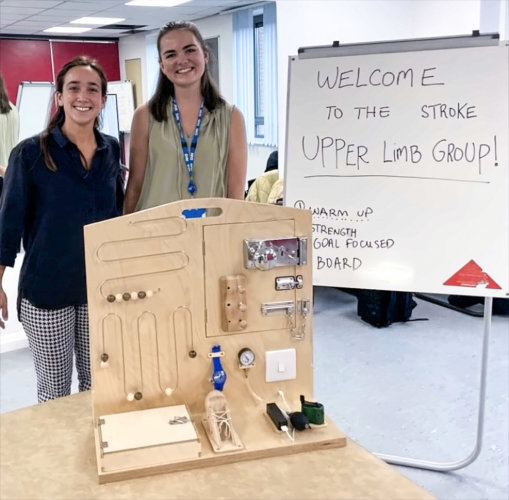Having a stroke can cause long-lasting problems with movement: stroke patients may need to effectively re-learn how to use their limbs. One recent innovation in supporting recovery is the use of group therapy, allowing patients to complete rehabilitation activities together and share their recovery journey with others having similar experiences. This approach allows both the physiological and the psychological impact of a stroke to be addressed over time.
Need
Working with Remap, a charity that helps disabled people by providing custom-made equipment to meet individual needs, I volunteered to assist a stroke rehabilitation group being set up locally. The medical professionals organising and leading the group were seeking a bespoke solution for upper limb rehabilitation. Drawing on both their initial draft of a set of requirements and research into other rehab aids, I developed a detailed list of types of movement that would be useful for patients to practice and identified real-world activities and object interactions that involved those types of movement. Working with the experts, I selected a shortlist that would cover key movement types.
Solution
Working with the experts, I selected a shortlist of activities that would cover key movement types, and that could be easily arranged on a portable, table-top board. I sketched a proposed layout and confirmed that this would meet their understanding of the need.
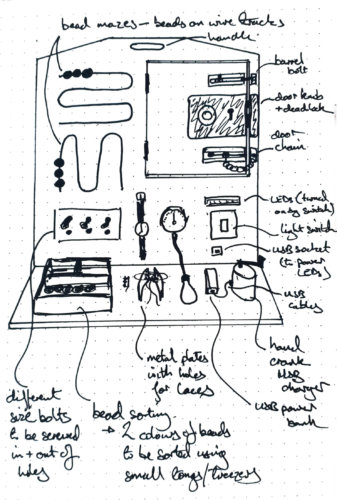
This equipment was to be used in a rehabilitation context, rather than a fully medical environment, and the end users were to be the patients rather than the professionals. I recognised that this should be recognised in the design: the rehab aid’s appearance needed to reflect a transition out of a clinical, medical environment and into a home environment. Additionally, the use of pleasant, attractive materials an forms rather than clinical, purely functional ones would enhance patients’ desire to interact with the aid, meaning rehab sessions would be less a chore and more an enjoyable exercise. I selected materials and components to conform to a consistent aesthetic and convey a sense of warmth and homeliness: wood under clear (sanitiser-resistant) finishes, with polished stainless steel or chrome fittings.
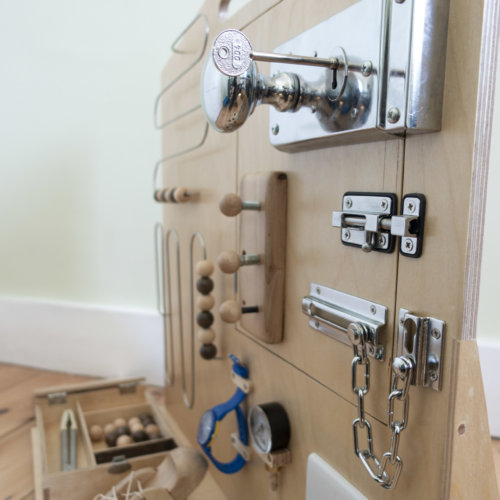
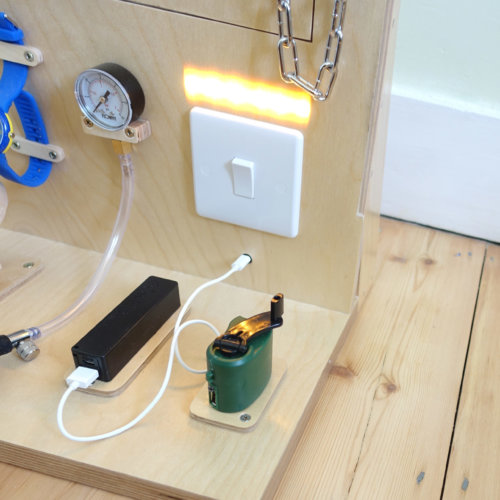
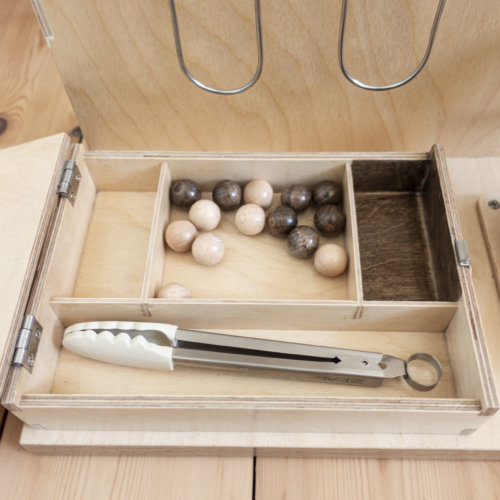
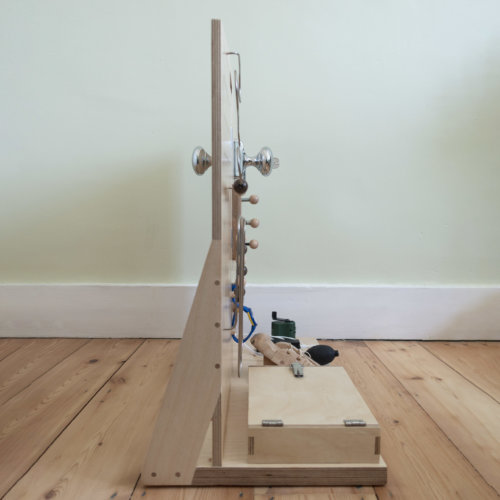
The final rehabilitation board included:
- a mini door (elbow/shoulder push-pull)
- a sprung doorknob (wrist rotation against resistance)
- a deadbolt key (finger grip and wrist rotation)
- a barrel bolt (finger grip and lateral arm motion)
- a security chain (finger dexterity and hand control)
- a wooden block with 3 sizes of bolt in threaded holes (finger grip and dexterity, wrist rotation)
- a light switch (simple push arm/hand movement)
- a hand crank generator (circular arm motion)
- a USB power bank (finger grip of cable and push/pull motion for insertion)
- a sealed pump bulb and pressure gauge (grip strength)
- a watch (fine finger control setting the time)
- a ‘shoe’ for tying knots/bows (fine finger/hand control)
- a coloured bead sorting game either to do by hand or using small tongs (pinch grip and arm motion)
- two bead mazes (medium-scale arm motion)
